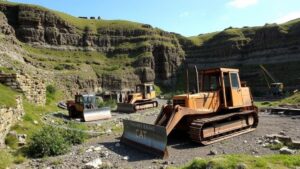Rediscovering Artifact Clues in Early Frontier Census Records
Rediscovering Artifact Clues in Early Frontier Census Records
The study of early frontier census records offers historians and archaeologists a unique opportunity to understand the socio-economic conditions, population dynamics, and cultural developments of the United States during its westward expansion. These records not only list individuals but also contain invaluable artifact clues that can be analyzed to infer broader societal trends. This article seeks to explore the significance of these records, the types of artifacts they reference, and the practical methodologies employed in utilizing this data for historical reconstruction.
The Historical Context of Early Frontier Census Records
The early frontier census records, notably the United States Federal Census, began in 1790, driven by the need to allocate representation and resources effectively. e records became particularly significant during the 19th century as settlers moved westward. For example, the 1840 Census, which extended to new territories, included detailed data about settlers, such as age, gender, occupation, and property ownership. According to the U.S. Census Bureau, the census count recorded approximately 17 million individuals in 1840. These records laid the groundwork for understanding the intricacies of frontier life and its impacts on settlement development.
Artifact Clue Identification in Census Records
One of the key elements in frontier census records is the reference to specific artifacts that reflect the lifestyle and economic activities of early settlers. Artefacts identified can vary widely, from farming tools to household goods. For example, the presence of entries related to agriculture in the census indicates the types of crops grown and tools utilized in farming activities. Also, records may reference specific trade goods, such as firearms, textiles, and implements, that give insight into the local economy.
- Farming Uses: An increase in agricultural tools noted in the 1850 Census illustrated the shift towards farming as the primary means of livelihood.
- Household Goods: The documentation of items such as cooking ware or textiles not only highlights socio-economic status but also gender roles and domestic life during this era.
- Trade Goods: With the mention of certain goods, it is possible to identify trading routes and merchant activities prevalent in frontier towns.
Methodologies for Analyzing Census Records
To effectively analyze the artifact clues within census records, researchers employ a combination of qualitative and quantitative methodologies. These include detailed data coding concerning the presence and types of artifacts mentioned, geographical information systems (GIS) for spatial analysis, and historical contextualization through archaeological findings.
- Data Coding: Researchers catalogue and code references to artifacts using standardized terminologies, allowing for systematic identification of trends across different geographic locales.
- GIS Mapping: By mapping census data alongside archaeological findings, researchers can visualize settlement patterns and resource allocations, facilitating a comprehensive understanding of the frontier life.
- Archaeological Correlation: Cross-referencing census data with archaeological finds helps validate the existence and usage of certain artifacts, providing a robust source of historical evidence.
Case Studies and Real-World Applications
Several case studies illustrate the tangible benefits of exploring artifact clues within early frontier census records. For example, the analysis of the 1860 Census in Nebraska demonstrated a direct correlation between recorded agricultural production and the prevalence of specific farming tools unearthed in archaeological digs. The artifacts not only validated the census data but also provided insights into farming techniques and crop choices based on environmental conditions.
Another case study focuses on the migration patterns illustrated within the 1850 Census in California, which coincides with the Gold Rush. The records referenced various industries, including mining and trade, reflecting the surge in population and economic change. Archaeological findings at mining sites confirmed the tools and goods listed in the census, showcasing how these records can shed light on significant historical events directly.
Conclusion and Actionable Takeaways
The rediscovery of artifact clues in early frontier census records offers an enlightening perspective into the past, bridging gaps in our understanding of settlement patterns, economic activities, and cultural transitions during Americas westward expansion. As this field of research evolves, scholars must continually refine methodologies and embrace interdisciplinary approaches that combine historical, archaeological, and data sciences.
- Researchers should prioritize the systematic documentation of artifact clues in census data to support historical narratives.
- The integration of technology, such as GIS, will enhance the spatial analysis of cultural and economic trends.
- Collaboration between historians and archaeologists is crucial in validating findings and enriching the understanding of early American life.
By engaging with and analyzing these historical records, we can paint a more comprehensive picture of how early American settlers lived, worked, and interacted with their environments.

